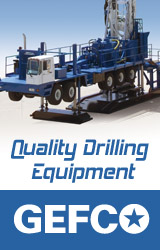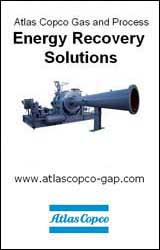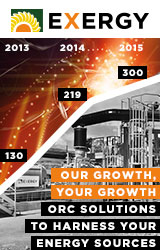Geothermal Developments Highlights from SMU Conference in Dallas
Geothermal energy is typically not the first thing that comes to mind when thinking of Texas, a state sprinkled with oil and gas wells. But in June of this year, geothermal energy moved into the spotlight as more than 220 people came together in Dallas to learn about industry utilization of geothermal resources at Southern Methodist University’s (SMU) third annual Geothermal Energy Utilization Conference.
SMU’s Geothermal Lab held the event on June 17th and 18th, and focused primarily on ways to develop geothermal energy in sedimentary basins from moderate temperatures. Those in attendance came from a variety of areas including the industry, manufacturing, financing, investment, government, academia, and real estate. Such an array of backgrounds added more dimension to the conference and helped with productivity.
“This conference gave me the ability to meet a diverse group of people who had a common interest,” said Ben Russo, director of development, contracts, and regulation for Cleco Power LLC. “We were all interested in understanding the geothermal technology out there.”
Highlights of the conference included presentations by industry professionals, which touched on a variety of subjects in the geothermal industry. Topics ranged from new uses for geothermal energy to technological developments.
“The technologies discussed at the conference show the advancements being made, which will increase the ability to develop projects at lower temperatures and fluid rates,” said Maria Richards, program coordinator for SMU’s Geothermal Lab.
These advancements are being made by development of new resources and technologies. Two more familiar technologies that were featured are Enhanced Geothermal Systems and Geothermal Co-production. Enhanced Geothermal Systems are engineered reservoirs, created to produce energy from geothermal resources that otherwise lack water. Many projects are underway to develop this technology, including a Nevada project that could establish itself as the first commercial project to apply this system in the United States.
Geothermal Co-production is also being tested in Florida, a state that is not often linked with geothermal energy. Co-production uses thermal fluids commonly produced from oil and gas wells to produce power and, if successful, could provide energy to the seven states in the Texas Gulf Coast Plain. Although advancements in these areas are recognized as important, some people are looking past them to lesser known uses and technologies.
One such person is Russo, who draws attention to the fact that small geothermal power plants could be the best option during natural disasters because they have an ability to come back online faster than other types of plants. “If you are able to keep your onshore production going during natural disasters when your offshore sites are shut off, then you can reduce some of the volatility in the loss of offshore production,” he explained.
During his SMU presentation, Russo focused on high security locations, like the Southern states, noting that the idea of small geothermal plants in that region has faced some setbacks due to the price of development and cooling restrictions. But geothermal plants are highly resistant to interruptions of power generation from natural disasters, making them one of the more reliable energy sources.
“These mini power plants are able to serve as a back-up source that other alternative and fossil fuel energy sources cannot match,” Richards said. Cleco Power has been studying the idea of small power plants for more than a year in all of their service territories in Louisiana, and hopes to overcome the setbacks. “The power plants are something that has great potential, and we are very excited about the prospects for them,” Russo said.
The conference not only showcased new uses, but also reached out to new methodologies. Karsten Pruess, a senior scientist at Lawrence Berkeley Laboratory, introduced the concept of using carbon dioxide as a heat transmission fluid instead of water in Enhanced Geothermal Systems. Research on the concept has not only been done in the US, but also in France, Germany, and Australia. Pruess hopes that interest in it continues grows: “There are a number of things that need to be done in this area,” he said. “It would need some standard research for about two or three years, and then we would be ready to go to the field.”
Like most new technologies, carbon dioxide faces the problem of expenses. A considerable amount of carbon dioxide would be needed for heat transmission, and right now it is fairly expensive. “Carbon dioxide is the biggest cost item with this,” Pruess said. “But the price of it could go down in the future if carbon dioxide is ever taxed.”
It might be well worth exploring this technology though because it is estimated that using carbon dioxide would not only overcome obstacles associated with water-based Enhanced Geothermal Systems, but it could also produce at least 50% more energy than water. Using this methodology is also beneficial because there could be an opportunity to earn credits for storing greenhouse gases. “The idea of a power plant being not just carbon neutral, but carbon negative is one to work toward,” Richards said. Pruess’ presentation added to the innovative ideas introduced at the SMU conference, which combined to bring more insight and ideas on ways to expand an already growing geothermal industry. “Anybody could go to this conference and get a lot of information out of it,” Russo said. “I think that is something you need to have for the geothermal area to develop.”
Geothermal Energy Utilization Associated with Oil & Gas Development (SMU Conference)
www.smu.edu/geothermal











